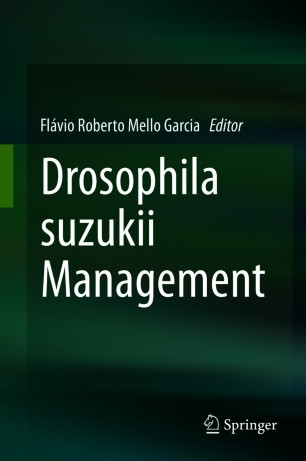Ver ítem
- xmlui.general.dspace_homeCentros Regionales y EEAsCentro Regional Tucumán - Santiago del EsteroEEA FamailláPartes de librosxmlui.ArtifactBrowser.ItemViewer.trail
- Inicio
- Centros Regionales y EEAs
- Centro Regional Tucumán - Santiago del Estero
- EEA Famaillá
- Partes de libros
- Ver ítem
The Biology and Ecology of Drosophila suzukii (Diptera: Drosophilidae)
Resumen
Preference of egg laying in ripe (or in ripening process), healthy, soft, small fruits (berries and stone fruits) still attached to the plant makes Drosophila suzukii (spotted wing Drosophila, SWD) a severe, harmful pest, capable of producing huge food and economic losses to Asia, Europe, and America. The high degree of polyphagy shown by SWD either in their native region, Eastern and Southeastern Asia, or in the invaded continents, besides its seasonal
[ver mas...]
Preference of egg laying in ripe (or in ripening process), healthy, soft, small fruits (berries and stone fruits) still attached to the plant makes Drosophila suzukii (spotted wing Drosophila, SWD) a severe, harmful pest, capable of producing huge food and economic losses to Asia, Europe, and America. The high degree of polyphagy shown by SWD either in their native region, Eastern and Southeastern Asia, or in the invaded continents, besides its seasonal phenotypic plasticity that allows it adaptations to adverse thermal periods, greatly favors SWD establishment and dispersion into new environments. In view of its high-damaging profile and rapid adaptability to settle in different world regions, several authors have focused on the study of biological and ecological features of this invasive pestiferous insect. In this regard, the chapter provides summarized information on life cycle, oviposition preference, larva feeding effects on fruits, crop and non-crop host plants worldwide range, host preference, continental dispersal, seasonal biology, population dynamic, thermal susceptibility, reproductive behavior, interspecific and intergeneric interactions with other frugivorous dipterans, and relationships with natural enemies in native and introduced regions. A deep knowledge of the relationships between SWD and ecological components of newly invaded landscapes is critical for designing effective, environmental-friendly, SWD management strategies.
[Cerrar]

Autor
Kirschbaum, Daniel Santiago;
Funes, Claudia Fernanda;
Buonocore Biancheri, María Josefina;
Suárez, Lorena del Carmen;
Ovruski Alderete, Sergio Marcelo;
Fuente
Drosophila suzukii Management / editor: Flávio Roberto Mello Garcia. Switzerland: Springer Nature, 2020. Chapter 4, p. 41-91.
Fecha
2020
Editorial
Springer
ISBN
978-3-030-62692-1
Formato
pdf
Tipo de documento
parte de libro
Palabras Claves
Derechos de acceso
Restringido
 Excepto donde se diga explicitamente, este item se publica bajo la siguiente descripción: Creative Commons Attribution-NonCommercial-ShareAlike 2.5 Unported (CC BY-NC-SA 2.5)
Excepto donde se diga explicitamente, este item se publica bajo la siguiente descripción: Creative Commons Attribution-NonCommercial-ShareAlike 2.5 Unported (CC BY-NC-SA 2.5)

